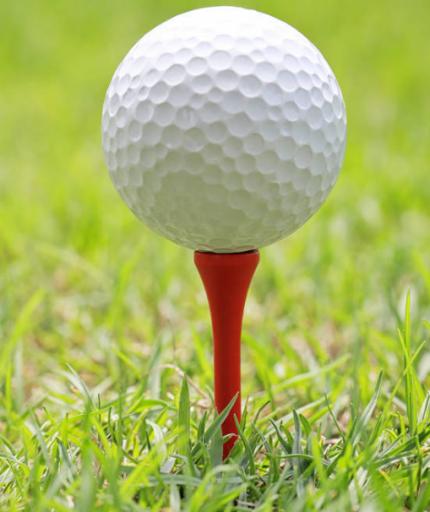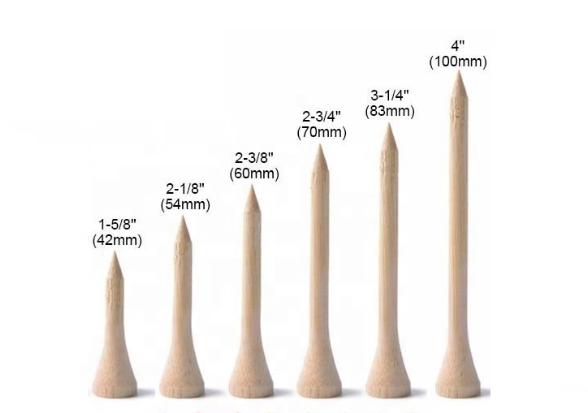Golf tees may seem like small, insignificant tools in a golfer’s bag, but their size and design can significantly impact your game. Choosing the right tee size isn’t just about convenience—it’s about optimizing launch angle, reducing spin, and maximizing distance. Whether you’re a beginner or a seasoned player, understanding how tee dimensions affect your performance is key. In this guide, we’ll break down everything you need to know about selecting the perfect golf tee size.

Why Tee Size Matters
Before diving into specifics, let’s address why tee size is important. A tee elevates the ball off the ground, allowing you to strike it cleanly with minimal interference from the turf. The height of the tee determines how much of the clubface connects with the ball, which in turn affects:
– Launch angle: Higher tees encourage an upward strike, ideal for drivers.
– Spin rate: Lower tees reduce backspin, which can help control shots with irons.
– Consistency: Using the same tee height for a club type builds muscle memory.

Using the wrong tee size can lead to topped shots, excessive spin, or even damage to your club. Let’s explore how to avoid these pitfalls.
Standard Tee Sizes: Breaking Down the Options
Golf tees come in various lengths, typically ranging from 2.75 inches (70mm) to 4 inches (100mm). Here’s a quick overview:
- Short Tees (2.75–3.25 inches)
– Best for: Irons, hybrids, and fairway woods.
– Why? These clubs require a lower tee height to promote a shallow or neutral angle of attack. A shorter tee ensures the ball isn’t hovering too high, which could lead to thin shots or excessive backspin.
- Medium Tees (3.25–3.75 inches)
– Best for: Most drivers and players with moderate swing speeds.
– Why? This range offers versatility. For drivers, a medium tee allows half the ball to sit above the clubhead at address, encouraging a slight upward strike for maximum distance.
- Long Tees (3.75–4+ inches)
– Best for: High-swing-speed players using oversized drivers (e.g., 460cc heads).
– Why? Longer tees accommodate the larger clubface of modern drivers. They also suit players who prefer a higher ball flight.
Factors to Consider When Choosing a Tee Size
While the above categories provide a starting point, your ideal tee size depends on several variables:
- Club Type
– Driver: The general rule is to tee the ball so that half of it sits above the driver’s crown when the club is grounded. For example, if your driver’s face height is 2 inches, aim for a tee that positions the ball 1 inch above the ground. Most drivers pair well with 3.25–4-inch tees.
– Fairway Woods/Irons: Use shorter tees (2.75–3 inches). The ball should barely hover above the turf—just enough to ensure a clean strike.
- Swing Speed
Your swing speed influences how high you should tee the ball:
– High swing speed (105+ mph): A longer tee (3.75+ inches) helps you strike the ball on the upswing, reducing spin and maximizing carry.
– Moderate swing speed (85–104 mph): Stick to medium tees (3.25–3.75 inches).
– Slow swing speed (<85 mph): A shorter tee (3 inches or less) can help you make solid contact without ‘scooping’ the ball.
- Ball Position
Where you position the ball in your stance also affects tee height. For example:
– Forward stance (driver): Tee the ball higher to promote an upward strike.
– Middle/back stance (irons): Keep the tee low to avoid hitting the ball too high on the face.
- Course Conditions
– Soft turf: Use slightly longer tees to prevent the tee from sinking too deep.
– Hard ground: Shorter tees are more stable and less likely to snap.
- Personal Preference
Some players swear by unconventional tee heights. For instance, Bryson DeChambeau often uses extra-long tees to optimize his launch monitor-tuned driver setup. Experiment during practice rounds to find what works for you.
Material and Durability: Does It Affect Size Choice?
Most tees are made from wood, plastic, or biodegradable materials. While material doesn’t directly impact size, it affects durability and usability:
– Wooden tees: Affordable but prone to breaking. Opt for shorter wooden tees with irons to save money.
– Plastic tees: Durable and reusable. These work well for drivers, as they’re less likely to snap with high-speed swings.
– Brush tees: These have a unique design that reduces friction. They’re typically medium-length and suit players seeking consistency.
Pro tip: If you’re using a long tee, choose a sturdy material to avoid frequent replacements.
Rules and Regulations: Staying Compliant
The USGA and R&A have specific rules about tee dimensions:
– Length: No restrictions. Use any length you prefer.
– Design: Tees must not ‘unfairly influence ball movement’ or assist alignment. Avoid tees with markings or features that could act as alignment aids.
While tournament-legal tees are widely available, always check local rules if you’re competing.
Specialty Tees: Are They Worth Trying?
Innovations in tee design claim to improve performance. Here’s a quick assessment:
– Zero Friction Tees: Pronged tops reduce resistance during the swing. These work well for drivers and come in multiple sizes.
– Martini Tees: A wide, flat cup cradles the ball. Ideal for players struggling with consistency.
– Adjustable Tees: These let you customize height on the fly. Great for testing different setups.
While specialty tees can enhance your game, focus on mastering standard tees first.
Step-by-Step Guide to Finding Your Ideal Tee Size
- Start with your driver:
– Ground your driver behind the ball.
– Adjust the tee height until half the ball is above the club’s crown.
– Note the tee length required (e.g., 3.5 inches).
- Test with irons:
– Tee the ball so it’s barely above the ground.
– Use a 2.75-inch tee and adjust based on strike quality.
- Practice with different lengths:
– Hit 10 drives with a 3-inch tee and 10 with a 4-inch tee. Compare distance and accuracy.
- Consider comfort: If a tee feels too tall or unstable, size down.
Common Mistakes to Avoid
– Using one tee for all clubs: Carry multiple sizes for drivers, irons, and hybrids.
– Teeing too high with irons: This can cause pop-ups or inconsistent strikes.
– Ignoring breakage: Replace splintered or bent tees to avoid erratic ball placement.
Final Thoughts
Choosing the right golf tee size isn’t rocket science, but it requires attention to detail. Start by matching tee length to your club type and swing speed, then refine based on feel and results. Remember: Consistency is key. Once you find your ideal setup, stick with it—your scorecard will thank you.
Now, head to the range, experiment with different tees, and watch your drives soar farther and straighter than ever!
